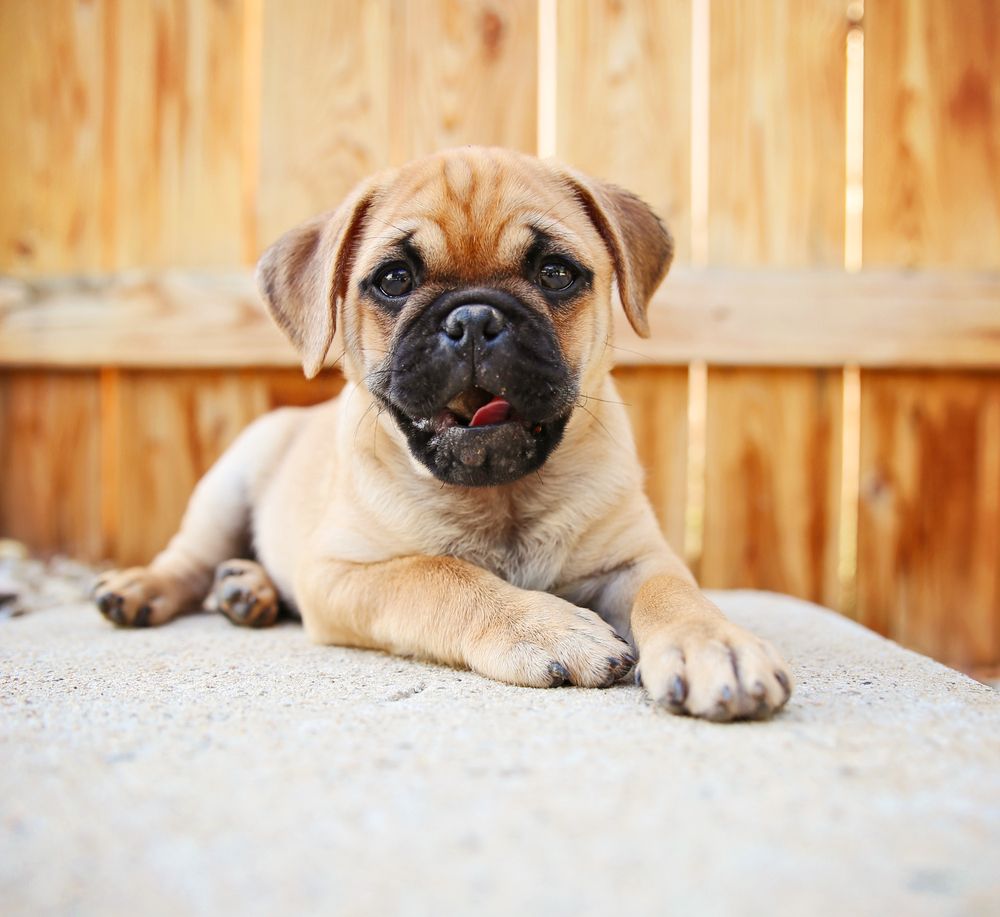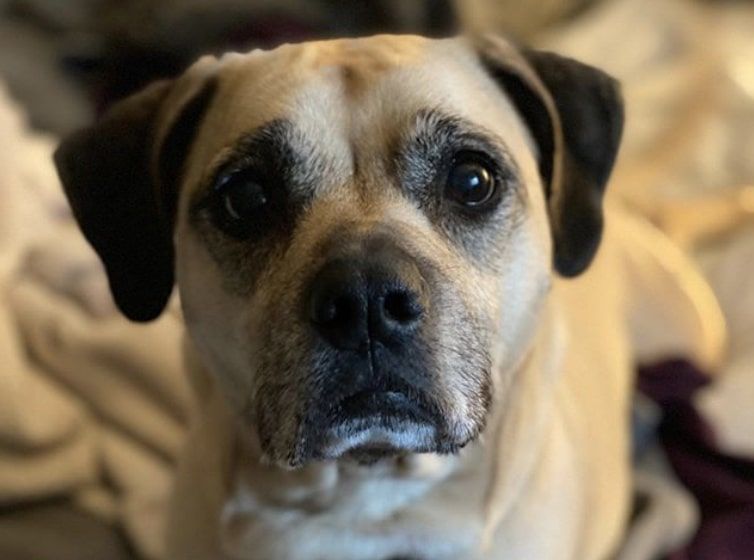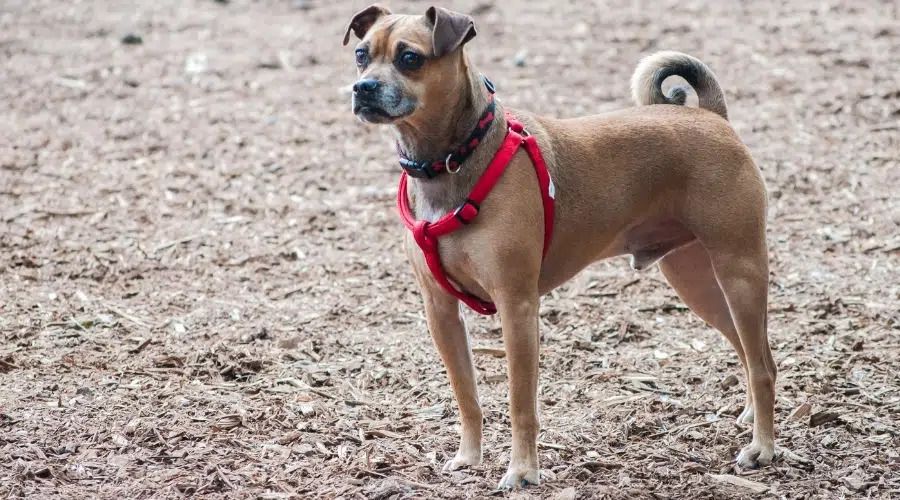The Pug Greyhound mix, also known as the Pughound, is a fascinating crossbreed that combines the lovable characteristics of the Pug with the agility and grace of the Greyhound. This hybrid breed has gained popularity for its adorable appearance, friendly temperament, and unique blend of traits. In this article, we will delve into the origins of the Pug Greyhound mix, explore its physical and behavioral attributes, and discuss how to care for and train these delightful companions.

Origins of the Pug Greyhound Mix
The Pug Greyhound mix is a result of crossing a Pug, a small companion breed originating from China, with a Greyhound, a sighthound breed renowned for its speed and elegance. This intentional crossbreeding aims to combine the desirable traits of both breeds, creating a unique and captivating hybrid.
Appearance and Physical Features
The Pug Greyhound mix inherits physical features from both the Pug and the Greyhound breeds, resulting in a unique and charming appearance. Here are some key characteristics:
· Size: The size of a Pug Greyhound mix can vary depending on the traits inherited from each parent breed. Generally, they are medium-sized dogs.
· Build: They typically have a slender and athletic build, resembling the Greyhound in body shape.
· Head: Their head may exhibit a combination of features from both breeds. They may have a shorter muzzle like a Pug, along with expressive eyes and folded ears.
· Coat: The coat of a Pug Greyhound mix can vary in length, texture, and color. They may have a short and smooth coat like a Pug, or a slightly longer coat like a Greyhound. Common dog coat colors include fawn, brindle, black, or a combination of these.
· Tail: They usually have a long and slender tail, similar to the Greyhound.
Temperament and Personality
Pug Greyhound mixes are known for their friendly and affectionate nature. Here are some key traits that define their temperament and personality:
· Sociable: These dogs are typically social and enjoy being around people and other animals. They often form strong bonds with their human family members.
· Playful: Pug Greyhound mixes have a playful and energetic disposition. They love engaging in interactive games and activities, making them great companions for active individuals or families.
· Loyal: They are known to be loyal and devoted to their owners. They enjoy spending quality time with their families and thrive on attention and affection.
· Good with Children: Pug Greyhound mixes are generally good with children. However, as with any dog, proper supervision and teaching children how to interact with dogs respectfully is essential.
· Alert: These dogs tend to have a good sense of alertness and can make excellent watchdogs, alerting their owners to any potential dangers or strangers.

Health Considerations
When it comes to health, it's important to note that Pug Greyhound mixes can inherit health conditions from both parent breeds. Some common health considerations include:
· Brachycephalic Issues: Pugs are a brachycephalic breed, which means they have a shortened muzzle. This can lead to respiratory issues and make them more prone to heatstroke. It's critical to provide them with proper ventilation, avoid excessive heat or exercise, and keep them cool during hot weather.
· Eye Problems: Both Pugs and Greyhounds can be prone to certain eye conditions, such as dry eyes, corneal ulcers, or progressive retinal atrophy. Regular eye examinations by a veterinarian are required to monitor their eye health.
· Hip Dysplasia: Hip dysplasia, a condition where the hip joint doesn't develop properly, can be inherited from both parent breeds. This can cause pain, lameness, and mobility issues. Regular exercise, a balanced diet, and maintaining a healthy weight can help minimize the risk and severity of hip dysplasia.
· Other Considerations: Pug Greyhound mixes may also be susceptible to other health issues common in either breed, such as allergies, skin problems, or cardiac conditions. Regular veterinary check-ups, a nutritious diet, and a healthy lifestyle can contribute to their overall well-being.
It's significant to consult with a reputable breeder or a veterinarian for more specific information on potential health concerns and how to best care for your Pug Greyhound mix.
Grooming Needs
The grooming needs of a Pug Greyhound mix are generally moderate. Here are some important considerations for their grooming routine:
· Coat Care: Depending on the length and texture of their coat, Pug Greyhound mixes may require regular brushing to remove loose hair and keep their coat looking healthy. Use a soft-bristle brush or a grooming mitt to prevent any discomfort or skin irritation.
· Facial Folds: Pugs have facial folds that need special attention to prevent any skin problems. Ensure that the folds are kept clean and dry to avoid the buildup of moisture, which can lead to bacterial or fungal infections. Use a damp cloth or specialized wipes to gently clean the folds.
· Bathing: Pug Greyhound mixes generally do not require frequent baths unless they get particularly dirty or develop an odor. Use a mild dog shampoo and thoroughly rinse to remove any soap residue. It's vital to note that excessive bathing can strip their skin of natural oils and cause dryness or irritation.
· Ears: Check their ears regularly for any signs of redness, discharge, or bad odor, which may indicate an ear infection. Clean the ears gently using a veterinarian-approved ear-cleaning solution and cotton balls. Avoid inserting anything deep into the ear canal to prevent injury.
· Dental Care: Good dental hygiene is crucial for their overall health. Brush their teeth regularly with a dog-specific toothbrush and toothpaste to prevent plaque buildup and maintain healthy gums. Providing dental chews or toys can also help promote good oral health.

Exercise Requirements
Pug Greyhound mixes have a moderate to high energy level and require regular exercise to keep them happy and healthy. Here are some exercise guidelines for them:
· Daily Walks: Take them for daily walks to provide mental stimulation and physical exercise. Aim for at least 30 minutes to an hour of walking each day, depending on their age, health, and energy level.
· Interactive Play: Engage them in interactive play sessions that cater to their natural instincts. Use toys like puzzle toys, fetch, or tug-of-war games to keep them mentally stimulated and physically active.
· Mental Stimulation: In addition to physical exercise, provide mental stimulation through training exercises, obedience games, or food puzzles. This helps prevent boredom and keeps their minds sharp.
· Dog Sports: Pug Greyhound mixes can excel in various dog sports such as agility, obedience, or lure coursing. Consider enrolling them in these activities to provide additional mental and physical challenges.
It's important to note that while they enjoy physical activities, care should be taken not to overexert them, especially in hot weather due to their brachycephalic traits inherited from the Pug. Always provide access to fresh water and monitor them for signs of fatigue or overheating during exercise.
Training Tips for Pug Greyhound Mixes
Training a Pug Greyhound mix can be a rewarding experience. Here are some tips to help you effectively train and nurture their intelligence and eagerness to please:
· Positive Reinforcement: Use positive reinforcement techniques such as treats, praise, and rewards to motivate and encourage good behavior. Pug Greyhound mixes respond well to positive reinforcement and will be more eager to learn.
· Consistency and Patience: Be consistent with your training methods and commands. Practice patience as some dogs may take longer to grasp certain concepts. Remember that training is an ongoing process that requires time and dedication.
· Socialization: Early socialization is crucial for Pug Greyhound mixes to develop into well-rounded and confident dogs. Expose them to various environments, people, and animals from a young age to help them become comfortable and adaptable in different situations.
· Basic Commands: Teach them basic commands such as sit, stay, come, and down. Use short and clear commands, coupled with positive reinforcement, to reinforce their understanding.
· Leash Training: Since Pug Greyhound mixes have a strong prey drive inherited from the Greyhound, proper leash training is essential. Teach them to walk calmly on a leash and respond to your commands, ensuring their safety during walks.

· Crate Training: Introduce crate training as a safe and comfortable space for them. Make it a positive experience by associating the crate with rewards, treats, and a cozy bed. This helps with house training and provides them with a sense of security.
Feeding Guidelines
Proper nutrition plays a vital role in the health and well-being of Pug Greyhound mixes. A well-balanced diet that meets their specific dietary requirements is crucial. Consult with a veterinarian to determine the appropriate portion sizes and choose a high-quality dog food that caters to their size, age, and activity level. Regular mealtimes and portion control help maintain a healthy weight and prevent obesity.
Socialization and Interaction
Pug Greyhound mixes thrive on social interaction and companionship. Providing them with ample opportunities to meet and interact with other dogs and people from an early age helps them develop into well-socialized and friendly pets. Dog parks, obedience classes, and supervised playdates are excellent ways to expose them to various environments and stimuli, promoting their confidence and adaptability.
Living Arrangements and Suitable Environments
Pug Greyhound mixes can adapt to various living arrangements, including apartments or houses with yards. However, their exercise needs should be taken into consideration when determining the most suitable environment for them. Access to a safe and secure outdoor space where they can engage in physical activities is beneficial. It's important to note that they are sensitive to extreme temperatures, so appropriate measures should be taken to ensure their comfort and well-being.
Common Misconceptions about Pug Greyhound Mixes
There are a few misconceptions about Pug Greyhound mixes that need clarification. One common misconception is that they are prone to excessive barking. While Pugs are known to be vocal, the Greyhound influence often tempers this tendency in the hybrid breed. Another misconception is that their exercise requirements are excessive due to the Greyhound lineage. While they do require regular exercise, their needs can be met with moderate activity levels, such as daily walks and play sessions.
Potential Challenges of Owning a Pug Greyhound Mix
Prospective owners should be aware of the potential challenges associated with owning a Pug Greyhound mix. Their brachycephalic traits can make them prone to respiratory issues and overheating. Additionally, they may have a strong prey drive inherited from the Greyhound, requiring careful supervision around small animals. Being aware of these challenges and taking necessary precautions can help ensure a safe and fulfilling companionship.

Finding a Pug Greyhound Mix Puppy
When looking for a Pug Greyhound mix puppy, it is essential to find a reputable breeder who prioritizes the health and well-being of their dogs. Research and ask for recommendations from trusted sources. Visiting the breeder's facility, observing the living conditions, and meeting the parent dogs can provide insights into the overall quality and care provided. Alternatively, adoption from shelters or rescue organizations is a commendable option to provide a loving home to a deserving dog.
Responsible Ownership and Care
Responsible ownership of a Pug Greyhound mix entails providing proper care, attention, and a nurturing environment. Regular veterinary check-ups, vaccinations, and preventive treatments should be a priority. Ensuring a balanced diet, regular exercise, mental stimulation, and social interaction are key aspects of their overall well-being. Remember, owning a dog is a long-term commitment that requires time, dedication, and love.
FAQs (Frequently Asked Questions)
1. Are Pug Greyhound mixes suitable for families with children?
Yes, Pug Greyhound mixes are generally good with children. However, proper supervision and early socialization are essential to ensure a harmonious relationship between the dog and the children.
2. How much exercise do Pug Greyhound mixes require?
Pug Greyhound mixes have a moderate to high energy level and require regular exercise. Daily walks, play sessions, and mental stimulation activities are recommended to meet their exercise needs.
3. Do Pug Greyhound mixes shed a lot?
Pug Greyhound mixes have short coat that requires moderate grooming. While they do shed, the amount of shedding can vary depending on individual genetics.
4. Can Pug Greyhound mixes be left alone for long periods?
Pug Greyhound mixes thrive on social interaction and companionship. Leaving them alone for extended periods can lead to separation anxiety. It's recommended to provide them with adequate mental stimulation and companionship.
5. How long do Pug Greyhound mixes typically live?
The average lifespan of Pug Greyhound mixes is around 10 to 14 years, depending on various factors such as genetics, overall health, and lifestyle.
Conclusion
The Pug Greyhound mix is a delightful crossbreed that combines the endearing qualities of the Pug and the elegance of the Greyhound. Their lovable nature, unique appearance, and energetic personality make them a cherished addition to any family. By understanding their specific needs and providing proper care, training, and socialization, you can enjoy a lifelong companionship filled with affection, joy, and memorable moments.




